Key takeaways
- The Wendigo legend, rooted in Algonquian folklore, symbolizes the dangers of greed and isolation, reflecting human psychological struggles.
- Originating from real survival challenges, the myth serves as a cultural warning against loss of humanity during desperate times.
- The portrayal of the Wendigo in popular media highlights societal anxieties about consumption, isolation, and the balance between humanity and primal instincts.
- The legend ultimately encourages mindfulness regarding our desires, reminding us to stay connected and compassionate to avoid ‘monstrous’ transformation.
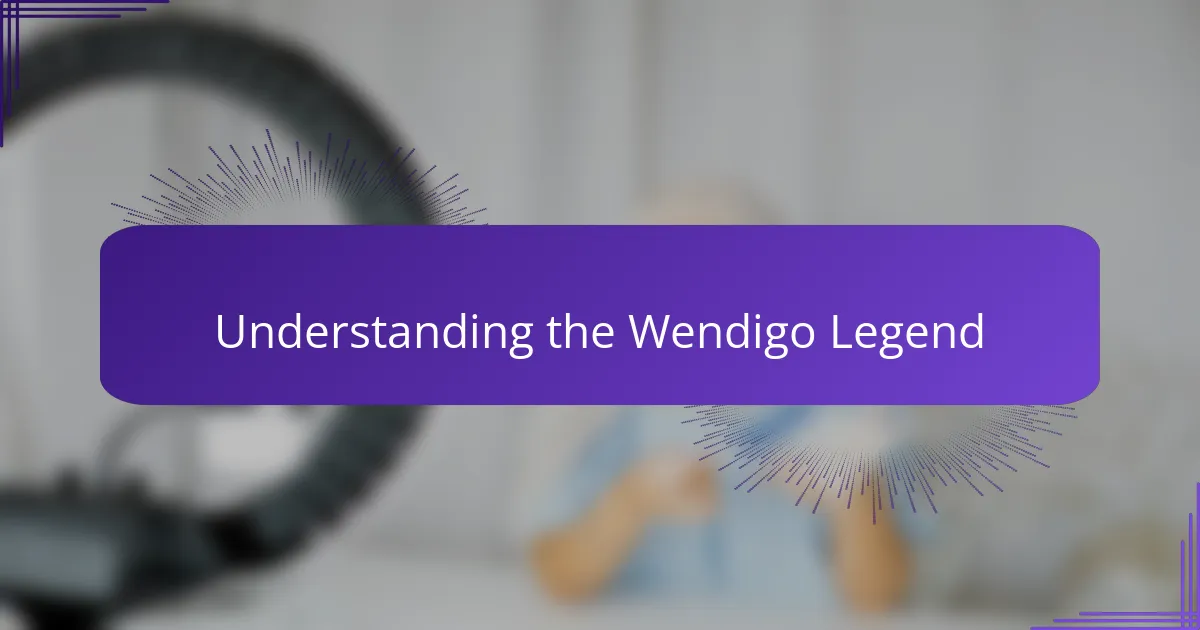
Understanding the Wendigo Legend
The Wendigo legend, deeply rooted in Algonquian folklore, fascinates me because it embodies more than just a scary story—it symbolizes the darker side of human nature. Have you ever wondered why some legends linger in our collective memory? For me, the Wendigo’s insatiable hunger reflects the dangers of greed and isolation, themes that feel surprisingly relevant even today.
When I first learned about the Wendigo, I was struck by its physical description: gaunt, skeletal, and endlessly hungry, almost like a walking embodiment of starvation and desperation. This image stuck with me, especially on cold winter nights, when the silence seemed to echo the creature’s eerie hunger. It made me think about how legends arise from both our fears and the harsh realities of survival.
What’s truly compelling about the Wendigo, in my opinion, is how it’s more than just a monster story. It’s a cultural warning wrapped in supernatural elements, cautioning against losing one’s humanity through excess or despair. This idea invites me to ask: could the Wendigo be a metaphor for what happens when people are pushed to their limits? Thinking about it this way, the legend becomes not just chilling folklore but a meaningful reflection of human psychology.
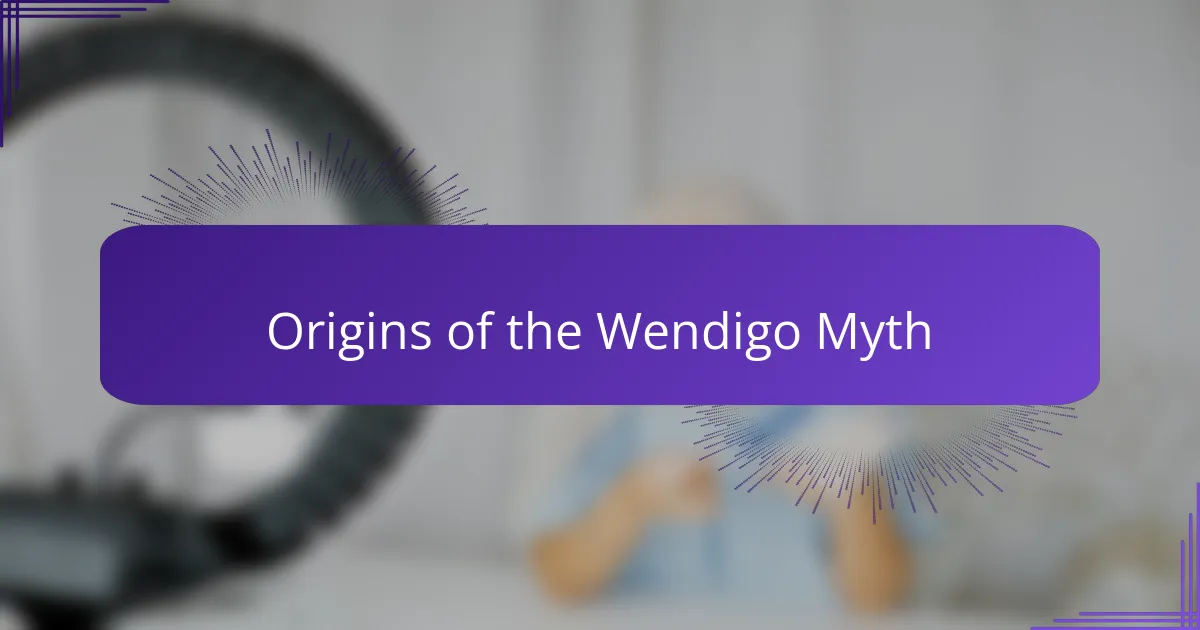
Origins of the Wendigo Myth
The Wendigo myth originates from the Algonquian-speaking peoples of North America, where it was traditionally told to explain the dangers of isolation and starvation during harsh winters. I find it fascinating that these stories emerged from real survival challenges, turning human struggles into something almost monstrous. Have you ever thought about how a legend can be born from the stark reality of people pushed to their limits?
As I dug deeper, I discovered that the Wendigo was often described as a spirit or creature that possessed humans, driving them to greed and cannibalism. This idea struck a chord with me because it reflects a community’s fear of losing control over their own nature in desperate times. It makes me wonder if the Wendigo’s origins serve as a psychological warning about the consequences of extreme hunger and moral collapse.
What intrigues me most is how the myth’s origins are tied to both natural and social elements—starvation, harsh climates, and the strain those place on individuals and groups. From what I’ve learned, the Wendigo wasn’t just a scary story but also a tool to enforce social norms and prevent behaviors that could tear communities apart. Doesn’t that reveal how much ancient legends like this are intertwined with everyday human fears and survival instincts?
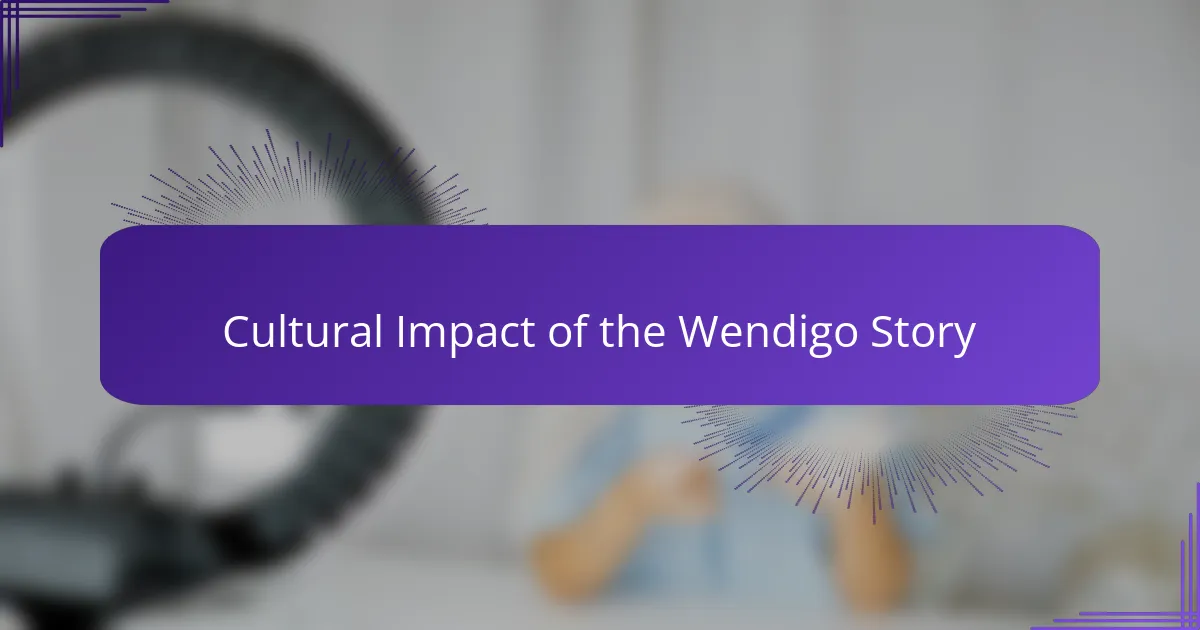
Cultural Impact of the Wendigo Story
The Wendigo story has seeped deeply into popular culture, showing up in books, movies, and even video games. I’ve noticed how its chilling image often serves as a metaphor for unchecked greed or the consequences of isolation—concepts that clearly resonate beyond the original legend. Have you ever caught yourself wondering why this creature keeps appearing in so many different forms?
From a cultural standpoint, the Wendigo acts almost like a mirror reflecting societal anxieties about consumption and loss of humanity. When I see how it’s used in modern storytelling, it reminds me that these fears aren’t just historical—they continue to haunt us today, especially in discussions about our environment and community. It’s fascinating how a centuries-old legend can still spark meaningful conversations.
On a more personal note, encountering the Wendigo tale made me rethink how myths influence values and behavior across generations. It feels like the story quietly shapes how communities view self-control and respect for nature, serving as a lasting reminder that some lessons are too important to forget. Have you experienced how certain legends subtly shape the way you see the world? For me, the Wendigo definitely does.
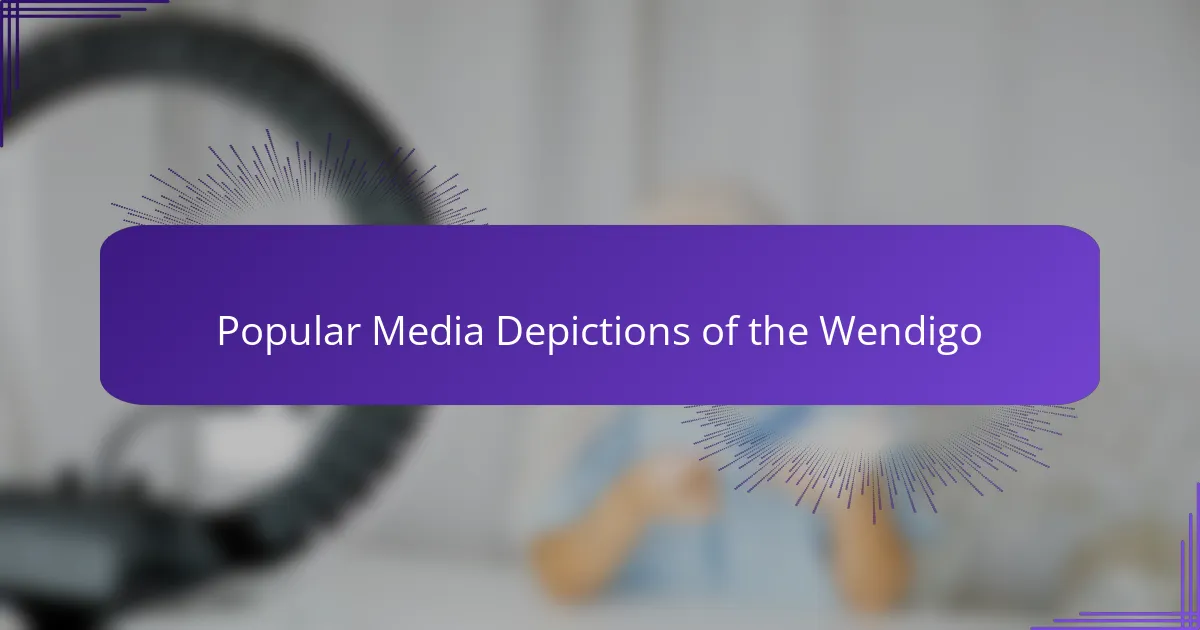
Popular Media Depictions of the Wendigo
I’ve always been intrigued by how the Wendigo transforms in popular media—from the terrifying creature in horror films to a symbol of inner darkness in TV shows. Why do you think storytellers keep returning to this legend? To me, it’s because the Wendigo perfectly captures that primal fear of losing oneself to something uncontrollable and monstrous.
In movies and video games, the Wendigo is often portrayed with grotesque features and a relentless hunger, which really drives home the sense of dread. I remember watching a film where the creature’s eerie, skeletal appearance left me uneasy long after the credits rolled. That image seems to stick with audiences, highlighting how visual storytelling brings this ancient legend to life in a way that feels immediate and visceral.
What fascinates me most is how the Wendigo legend adapts to modern fears. Whether it’s about environmental destruction or societal greed, the creature pops up as a metaphor in various media forms. This makes me wonder—does the Wendigo serve as a warning still relevant today, or has it become more of an entertaining monster figure? From my perspective, it’s a bit of both, which maybe explains its enduring popularity.
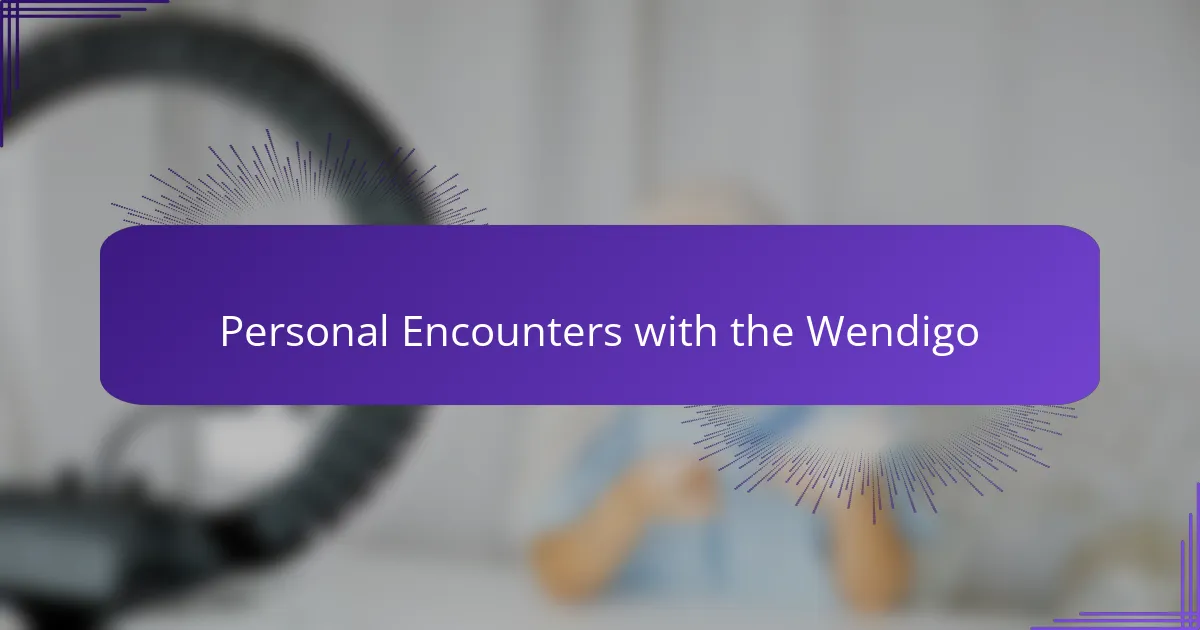
Personal Encounters with the Wendigo
I haven’t had a face-to-face encounter with the Wendigo, but I’ve come across stories from people who swear they felt its presence in the deep woods—unexplainable chills, eerie whispers, or sudden feelings of overwhelming hunger and dread. Have you ever walked alone in a forest and felt like something unseen was watching? Those accounts make me wonder if the Wendigo isn’t just a legend, but something that taps into primal fears lurking beneath our consciousness.
One friend once told me about a late-night hike where the silence was so complete, it felt almost unnatural. Suddenly, they caught sight of a gaunt figure in the distance, described like the Wendigo—tall, skeletal, and impossibly still. The fear in their voice was real, and even though it could’ve been their imagination, I believe these encounters reveal how powerful and unsettling the Wendigo myth remains in certain places. What would you do if you saw something like that?
These personal stories, whether true encounters or intense imagination sparked by the legend, highlight how the Wendigo lives beyond just words on a page. It becomes a presence in the night, a symbol of something ancient and terrifying that challenges our sense of safety and sanity. It’s this blend of the unknown and the deeply human that keeps the Wendigo legend alive in people’s minds—and in their experiences.
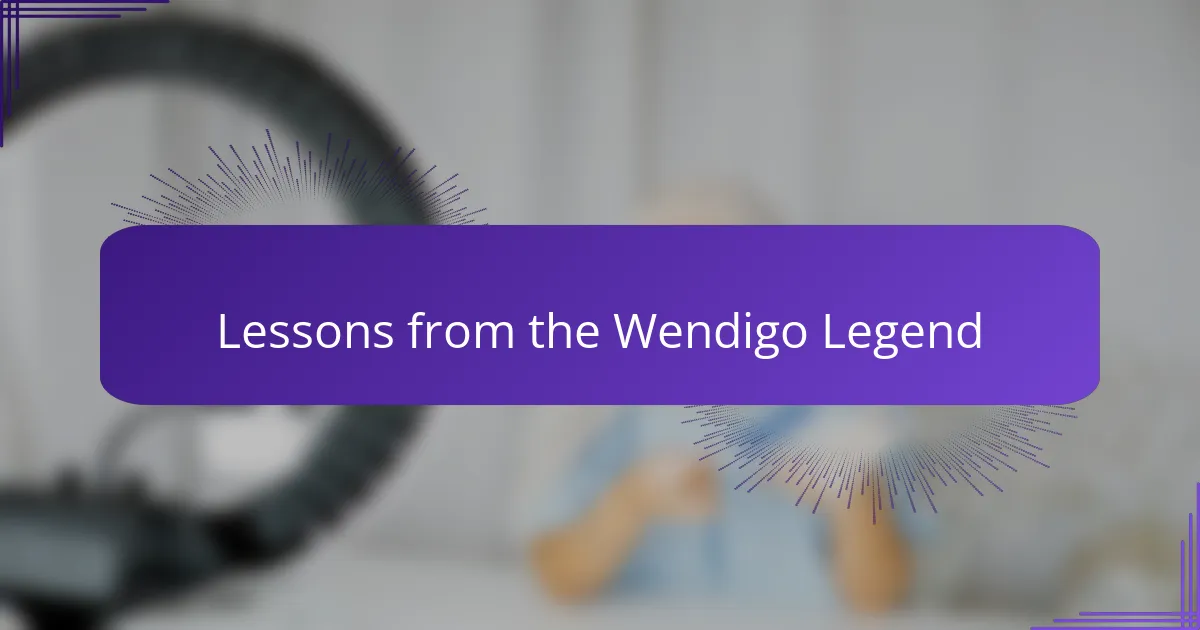
Lessons from the Wendigo Legend
Thinking about the lessons from the Wendigo legend, what really strikes me is its caution against excessive greed and selfishness. It’s as if the story warns us that hunger—whether for food, power, or wealth—can consume a person entirely, transforming them into something unrecognizable. I often reflect on how easy it is to lose ourselves when desire becomes insatiable.
The Wendigo also teaches me about the dangers of isolation. Have you ever noticed how being cut off from community or support can make someone vulnerable to despair or destructive urges? From what I understand, the legend highlights how loneliness can erode our humanity, pushing people toward dark places they might never have imagined.
On a more personal level, I find the Wendigo legend reminds me to stay grounded and connected with others. It nudges me to consider how I face my own fears and urges—not by succumbing to them, but by seeking balance and compassion. Isn’t that what these old stories are really about: guiding us to live better and kinder lives?
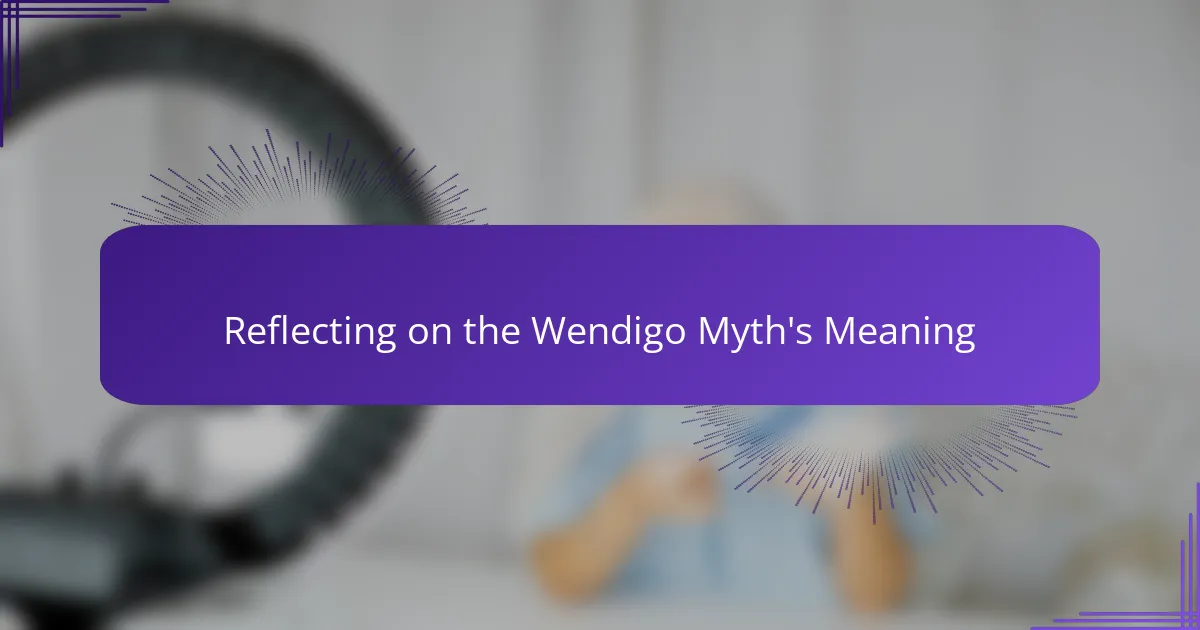
Reflecting on the Wendigo Myth’s Meaning
When I sit with the idea of the Wendigo myth’s meaning, I can’t help but feel it speaks to something deeply human—a warning that our darkest impulses can consume us if left unchecked. Have you ever caught yourself overwhelmed by a craving or feeling so isolated that it almost felt like losing a part of yourself? For me, the Wendigo captures that terrifying moment when survival instincts tip over into something monstrous.
I often think about how this legend isn’t just about a creature but about the fragile line between humanity and something wild and destructive. It makes me wonder if the Wendigo embodies not just physical hunger but a spiritual emptiness that grows when people become disconnected—from others, from nature, or even from their own values. Isn’t that a haunting thought to carry in mind?
Reflecting on this, I realize why the Wendigo legend remains relevant. It challenges me to confront the insatiable needs lurking inside each of us and reminds me how important it is to stay mindful of those shadows. Isn’t it reassuring to think that myths like this serve as reminders—ancient yet timeless—to not let our hunger, whether literal or metaphorical, swallow us whole?